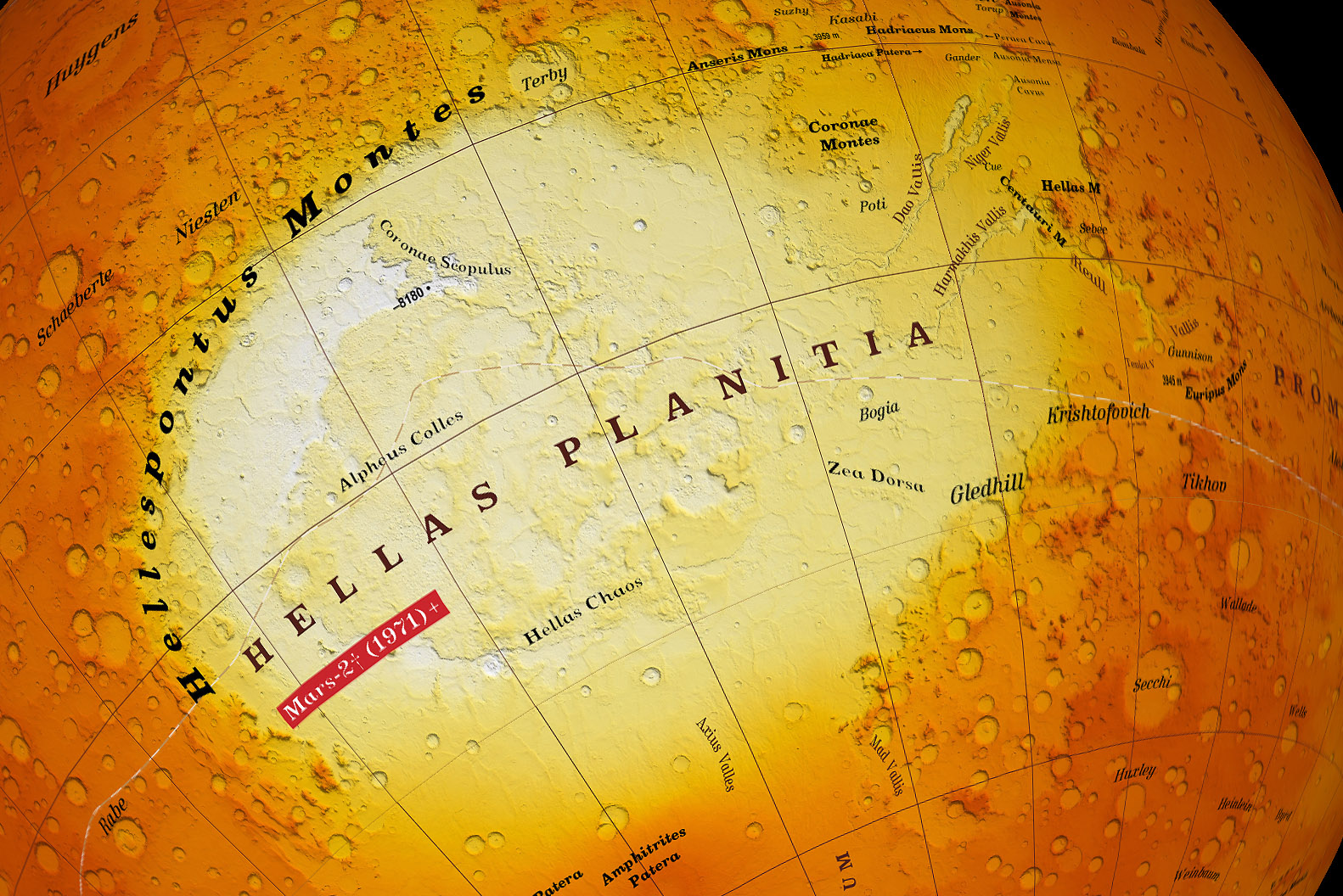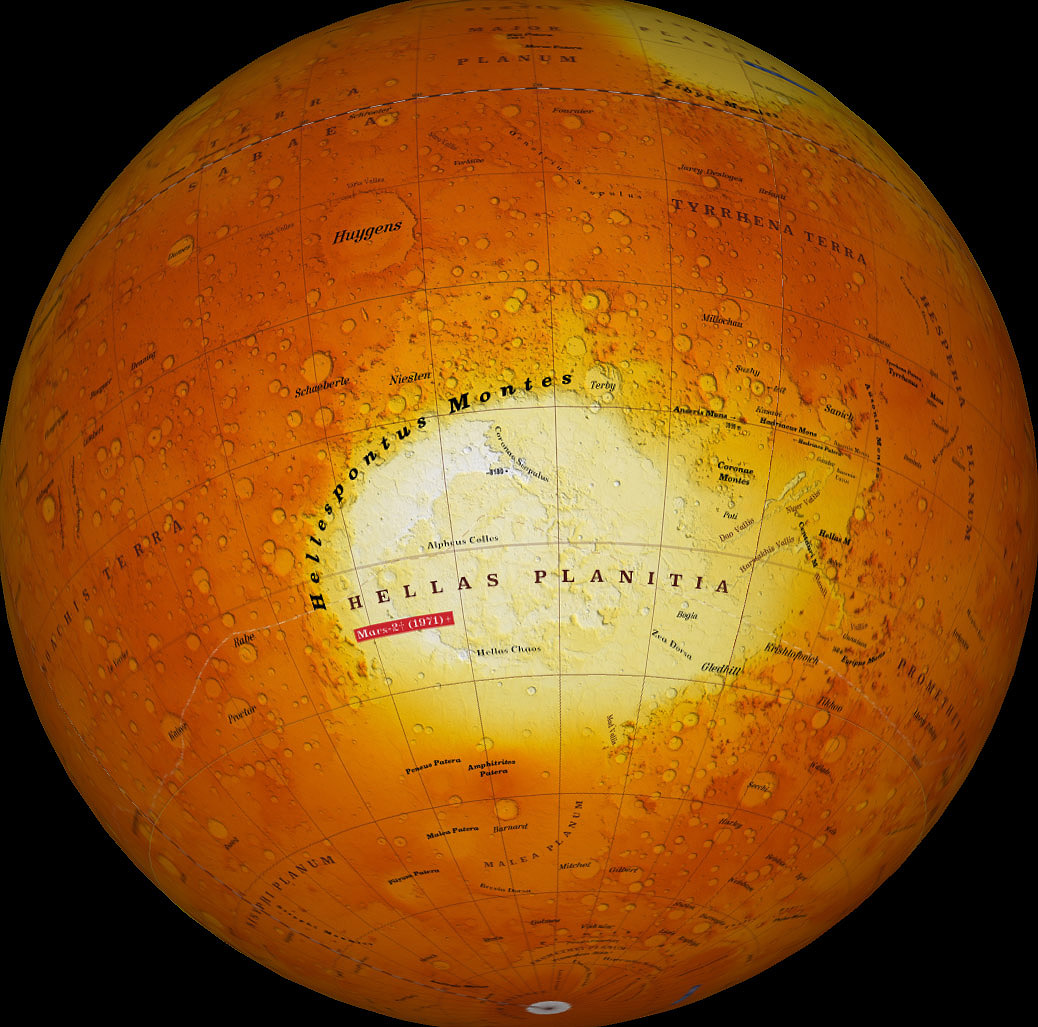Hellas Planitia


| Origin of name: Greece | A név eredete: Görögoszág (Hellasz) |
| Geologic description and interpretation: Ancient water-laid sediment is the dominant component of deposits within Hellas Planitia. Channels, consensually interpreted to be cut by water, lead into the basin. If lakes formed under climatic conditions similar to the modern Martian climate, they would develop thick ice carapaces, then the lakes would eventually sublimate away. Two units within Hellas exhibit a reticulate or honeycomb pattern, which we speculate are impressions made by lake-lowered ice blocks grounding into initially soft mud. Hellas Chaos is made of knobs that are erosional remnants of lower parts of interior deposit. Dominant erosional mechanisms likely include eolian deflation and devolatilization, collapse, and eolian deflation; elongate knobs may be yardangs oriented along dominant wind direction. | Geológiai leírás és magyarázat: A Hellas Planitia fő üledéke valamikori vízi üledék. A medencébe vízvájta völgyek vezetnek. Ha a Hellasban lévő tavak mai éghajlati viszonyok mellett alakultak ki, lassan teljesen eljegesedhettek, majd elszublimálhattak. A Hellason belüli egyes felszínek méhsejtmintázatot mutatnak, mely egy elmélet szerint a vízszintben lesüllyedt állapotban lassan üledékbe süllyedő, feltöredezett jégtáblák alakíthattak ki. A Hellas Chaos olyan dombokból áll, melyek az üledék eróziós maradványai. A defláció maradékgerinceket is kialakított. |
 
(http://www.sciencedirect.com/science/ article/B6WGF-45GWCH0-5/2/d963d462b3f6d0f021d77194512699ad) |